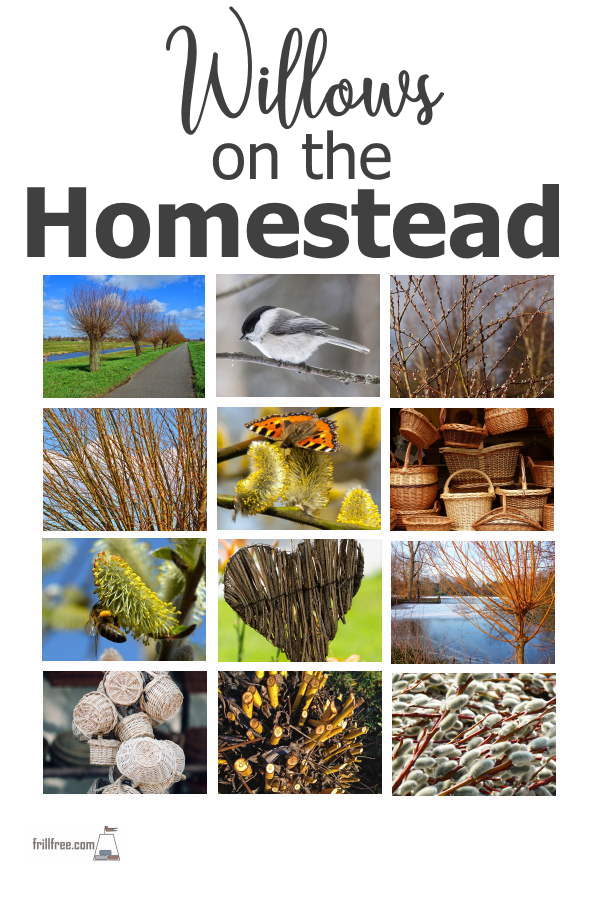- Homesteading
- Make Money Homesteading
- Willows on the Homestead
Willows on the Homestead
How To Grow Salix
Willows are hands down the most useful of shrubs or small trees. Typically they grow as understory trees among other deciduous trees like birch and maple, as well as larger conifer trees like larch and Douglas fir.
They attract bees for early spring fodder. They have large male flowers (the pussy part) which flower early, before anything else is out. You'll see bees very active among them, on those spring days after the sun has warmed the air.
Other uses for willows on the homestead are as a shelterbelt or windbreak.
Small birds like warblers and finches like to nest in them, because the slender flexible branches won't be strong enough for a cat or other predator to climb, but provide lots of small insects and spiders for young baby birds to eat.
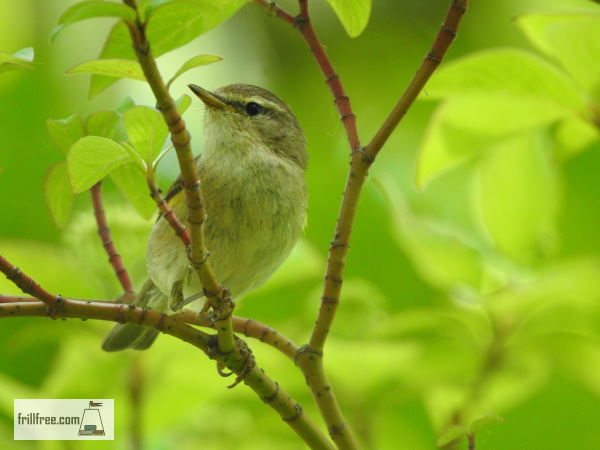 Songbirds such as warblers and finches like to nest in the willows - not only food, but shelter too
Songbirds such as warblers and finches like to nest in the willows - not only food, but shelter tooThe inner bark is the precursor to aspirin, but I don't recommend using it for pain relief - it's extremely bitter. However, you can make a tea from it to dip cuttings in as a rooting hormone.
Try it when you're propagating other shrubs, roses or herbs.
You can use willows are as firewood, or biofuel. The smell of it burning (dried, of course) is unforgettably sweet. Meat cooked over it has a distinctive flavor.
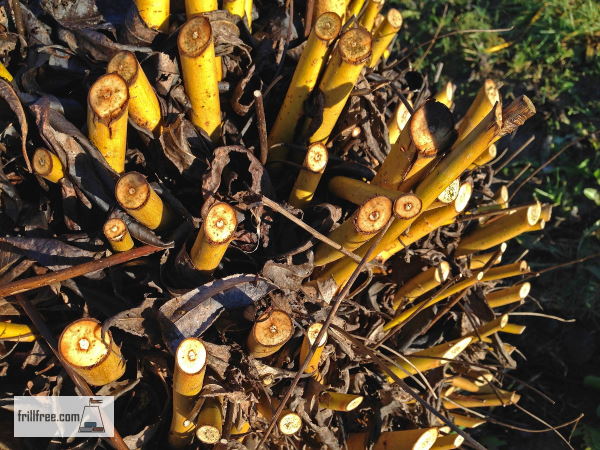 Pollarded or Coppiced Willows live for many years - cut it and they will grow
Pollarded or Coppiced Willows live for many years - cut it and they will growUse it to build furniture or trellises for the vegetable garden. Cut every two years or so, the flexible and straight canes or rods are strong enough to last a few years, longer if you store them out of the weather in the winter.
Combined with a wire fence, willows make a strong 'fedge' (combination of 'fence' and 'hedge'). Plant small cuttings in a row at the base of a strongly built wire fence as they'll be heavy and could pull it down if it's too weak.
Also excellent as a dead hedge, with that long straight whippy growth.
Tunnels or cathedrals are spectacular made with the live rods. They'll keep growing, so you'll have to prune them yearly. These structures are long lived and lots of fun.
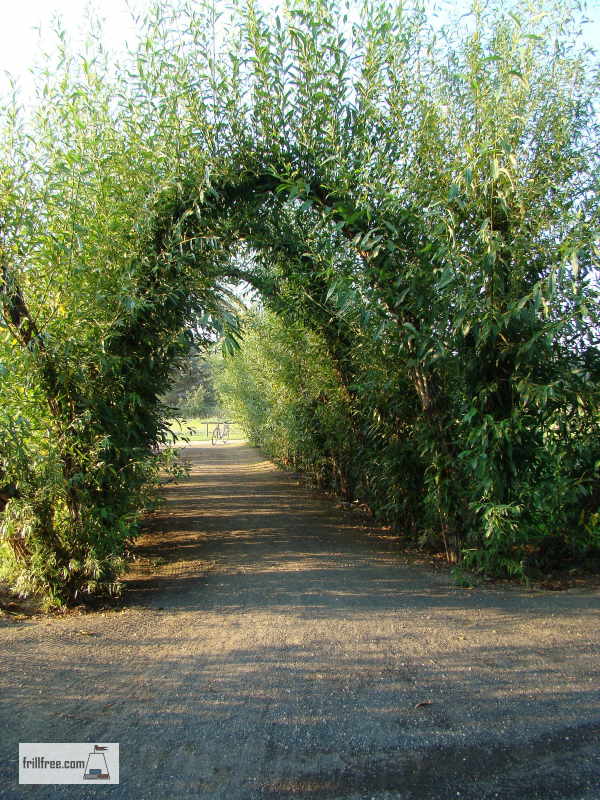 Willow Tunnel made from the live rods of Salix
Willow Tunnel made from the live rods of SalixUse the slender canes to make baskets, or for other crafts such as wreath bases or decorative hearts or other shapes.
Buttons cut from larger willow make great accents to hand knitted garments.
They make great erosion control planted on a stream bank to protect the soil.
Warning; depending on the type of willow you plant, keep it away from drain fields, foundations or water sources. It's true what they say; the roots will seek out moisture and choke out septic pipes and other water. This is one reason it's used to 'witch' water, its affinity for it.
How to Grow Willows
I've heard it said that willows are the only plant that only requires sunshine and water to grow.
That's true, but it's also true that young willows are also not strong enough to compete against weeds and other established plants, so give them a fighting chance by removing weeds and planting them where there's no competition.
Some nurseries will send dormant cuttings, which are simply 10-12" lengths of cane which you plant (right way up of course) almost all the way into the ground. Without much fuss, they'll root and start to grow.
They do need moisture, so the ideal spot would be somewhere that you can water, or near a stream.
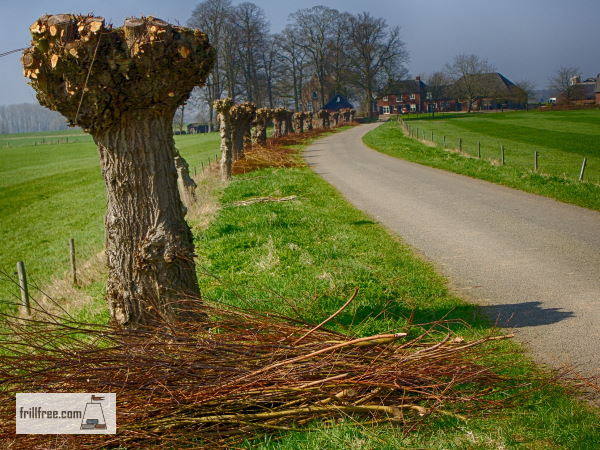 Pollarded Willows are cut every year. Eventually the pollards will be really big
Pollarded Willows are cut every year. Eventually the pollards will be really bigThey are also available as 'rods' which are long whippy canes. These are meant to use as living structures, such as tunnels or pergolas.
They're more expensive, but it's almost instant. They'll need to be pruned and trimmed as they grow over the following few years.
